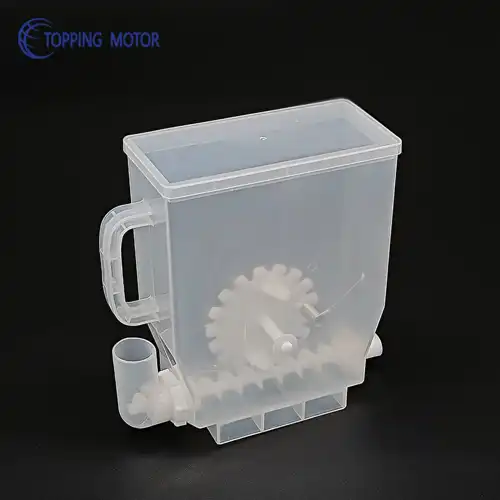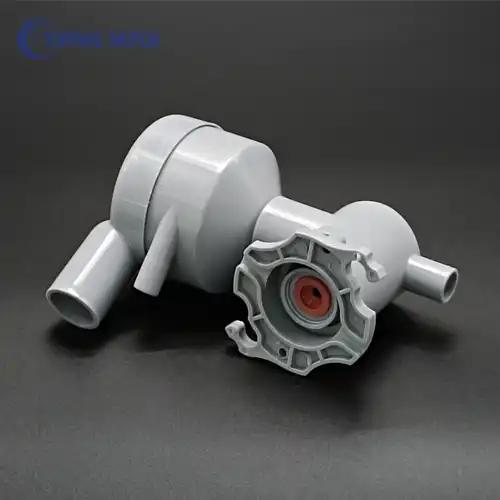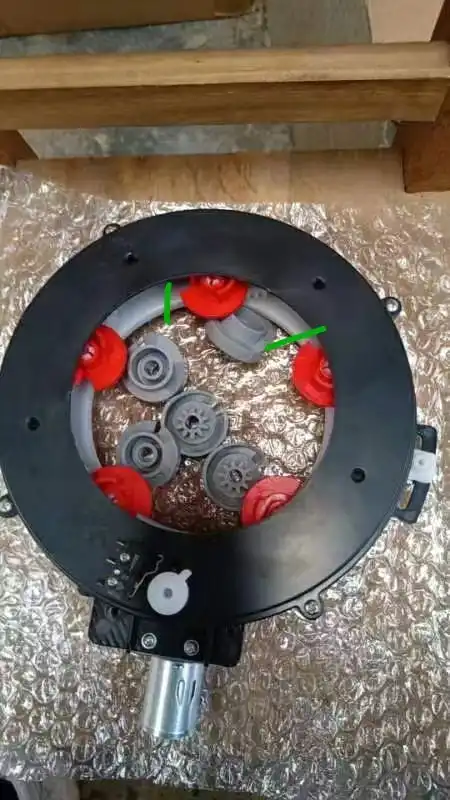What factors need to be considered when designing Coffee Vending Machine Dispensing Components?
2024-12-16 11:27:53
Coffee vending machines have garnered immense popularity in offices, public spaces, and commercial areas alike, revolutionizing the way people enjoy their daily caffeine fix. These machines offer unparalleled convenience, providing instant access to a diverse array of coffee beverages tailored to individual preferences.
Their widespread adoption can be attributed to their ability to streamline the coffee-making process, eliminating the need for manual brewing or lengthy queues at cafes.This trend underscores the versatility of these machines in adapting to evolving consumer demands and preferences.
The success of these machines heavily relies on the efficiency and reliability of their dispensing components. This article explores the key aspects that engineers and manufacturers should keep in mind when developing coffee vending machine dispensing components.


Component Integration
One of the most critical factors in designing coffee vending machine dispensing components is ensuring seamless integration of all parts. The various elements, including grinders, brewing units, milk frothers, and syrup dispensers, must work together harmoniously to create a smooth operation flow. This integration is essential for delivering consistent quality beverages and minimizing malfunctions.
Designers must place a premium on creating a modular system architecture that embodies the principles of flexibility, maintainability, and scalability. This approach necessitates the development of components that can be seamlessly integrated during assembly, ensuring a smooth and efficient process that minimizes downtime and labor costs. Conversely, during disassembly, these components should be designed to be effortlessly separated, allowing for quick and straightforward access for maintenance, repair, or upgrades.
The modular nature of the system further facilitates swift replacement of worn-out or faulty parts whenever the need arises.
This approach fosters flexibility, facilitates maintenance, and ensures that the system remains adaptable to future modifications or upgrades, ultimately enhancing its longevity and overall efficiency. This approach not only simplifies maintenance but also allows for future upgrades or modifications. Additionally, standardized connections and interfaces between components can help reduce complexity and improve overall system reliability.
By carefully planning the layout and interactions between components, designers can create a more efficient and reliable dispensing system.
Material Selection
The selection of materials for the dispensing components of a coffee vending machine is paramount in determining their operational performance, longevity, and safety standards. Designers must meticulously choose materials that possess a robust durability, ensuring they can withstand the rigors of frequent use without compromising their integrity. Furthermore, these materials must facilitate ease of cleaning, a crucial aspect in maintaining hygiene and preventing the build-up of residue or bacteria that could compromise the quality and safety of the dispensed beverages.
Given the challenging environment within a coffee machine, characterized by exposure to high temperatures, humidity, and various chemicals used in the brewing process, the chosen materials must exhibit exceptional resistance to these factors. They must be able to withstand the heat generated during brewing without degrading or emitting harmful substances into the coffee. Similarly, they should remain impervious to moisture, preventing corrosion or the growth of mold that could contaminate the beverages. Moreover, the materials should demonstrate chemical resistance, ensuring they do not react adversely with the coffee grounds, water, or cleaning agents used, thus preserving the purity and flavor of the coffee.
For example, the valve of a topping motor is typically made of stainless steel due to its corrosion resistance and durability. Sensors often incorporate both plastic and stainless steel materials, balancing cost-effectiveness with reliability. Dispensing nozzles commonly use brass and stainless steel, as these materials offer excellent heat conductivity and resistance to corrosion.
When selecting materials, designers should also consider factors such as food safety regulations, thermal properties, and chemical compatibility with coffee and cleaning agents.
Health and Safety Standards
Maintaining high hygiene standards is paramount in the design of coffee vending machine dispensing components. These components come into direct contact with food and beverages, making it crucial to prevent bacterial growth and ensure food safety. Designers must create components that are not only easy to clean but also resistant to the buildup of coffee residues, milk proteins, and other potential contaminants.
To meet hygiene standards, designers should incorporate features such as smooth surfaces, rounded corners, and minimal crevices where bacteria could accumulate. Self-cleaning mechanisms, such as automatic rinse cycles for milk frothers and brewing units, can help maintain cleanliness between manual cleaning sessions.
Additionally, designers should consider the accessibility of components for regular cleaning and maintenance. Removable parts that can be easily disassembled and sanitized can significantly improve the machine's overall hygiene. The use of antimicrobial materials or coatings in certain components can also help inhibit bacterial growth and maintain a hygienic environment within the machine.
User-Facing Components
The user interface of a coffee vending machine plays a crucial role in the overall user experience and directly impacts the functionality of the dispensing components. Designers must create an intuitive interface that allows for easy selection and customization of drinks while effectively controlling the various dispensing components.
A well-designed user interface should provide clear instructions and visual feedback to guide users through the drink selection process. The interface should be responsive and accurately translate user inputs into precise commands for the dispensing components.
Designers should also consider incorporating coffee vending machine dispensing components that enhance the user experience, such as the ability to adjust drink strength, temperature, or milk-to-coffee ratios. These customization options require careful coordination between the user interface and the dispensing components to ensure accurate and consistent results.
Furthermore, the user interface should provide information about the machine's status, including alerts for low ingredient levels or required maintenance. This integration between the interface and the internal components helps ensure smooth operation and timely servicing of the machine.
Manufacturers specializing in Coffee Vending Machine Dispensing Components
Selecting the right manufacturer for coffee vending machine dispensing components is crucial for ensuring the quality, reliability, and performance of the final product. Topping Motor is one such manufacturer that provides comprehensive OEM (Original Equipment Manufacturer) and ODM (Original Design Manufacturer) services for coffee vending machine components.
When choosing a manufacturer, it's important to consider coffee vending machine dispensing components such as their experience in the industry, quality control processes, and ability to meet specific design requirements.
Additionally, look for manufacturers that offer support throughout the design and production process, including prototyping, testing, and after-sales service. This collaborative approach can help address any issues early in the development cycle and ensure the final product meets all necessary performance and safety criteria.
For those seeking a reliable partner in coffee vending machine dispensing components, Topping Motor welcomes inquiries at inquiry@vendingmachinepart.com. Their expertise in providing customized solutions can be valuable for businesses looking to develop or improve their coffee vending machines.
References
1. Bhuiyan, N., & Baghel, A. An overview of continuous improvement: from the past to the present. Management Decision.
2. Domon, K., Yamamoto, K., & Honjo, Y. Vending machine. U.S. Patent No. 6,698,228. Washington, DC: U.S. Patent and Trademark Office.
3. European Vending Association. Hygiene Guidelines for the Design and Operation of Vending Machines.
4. Grindmaster-Cecilware. Vending Machine Components and Their Functions.
Send Inquiry

.webp)

.webp)
.webp)

